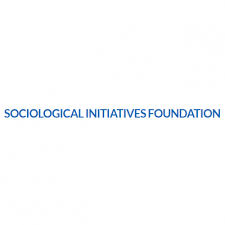
Modelling of mitigation pathways for F-gases
Expected Outcome:
Project results are expected to contribute to all of the following expected outcomes:
- Improved knowledge of regional pathways concerning the use of Ozone Depleting Substances and Fluorinated greenhouse gases (F-gases), options to mitigate this use, the resulting emissions, and how this interacts with the decarbonisation of the energy system;
- Improved modelling capacity regarding the use of Ozone Depleting Substances and F-gases in the refrigeration, air conditioning and heat pump sectors, in a manner that increases the availability to Parties to the Montreal Protocol[1] of modelling tools to inform them on policy options for an ambitious implementation of the Kigali Agreement[2], including a transition to natural refrigerants, and how this interacts with the decarbonisation of the energy system.
Scope:
F-gases are the fastest growing group of greenhouse gas emissions globally. The Montreal Protocol resulted in decreasing use and emissions of Ozone Depleting Substances and will now also regulate a phasedown of hydrofluorocarbons (HFCs), representing the largest share of F-gas use, of which the majority is used in refrigeration, air conditioning and heat pump equipment.
The project should improve the knowledge base of F-gas use and emission pathways under baseline conditions (i.e., policies as they are today), pathways that meet the Kigali Agreement and pathways that outperform the Kigali Agreement. The development of these pathways should also include fluorinated greenhouse gases not regulated under the Montreal Protocol, in particular those covered by the Regulation (EU) 2024/573 on fluorinated greenhouse gases[3]. It should cover all main regions globally separating at least the countries that fall under Article 5 of the Montreal Protocol and those that do not, and preferably further disaggregating them within these two classes, taking into account for instance climate conditions. The development should assess the interaction with the energy system, notably related to the deployment of HFC-alternatives in refrigeration, air conditioning and heat pump equipment and its impact on energy efficiency, the deployment of sulphur hexafluoride (SF6) or its alternatives in electrical switch-gear. Possible impacts on emissions of per- and polyfluoroalkyl substances (PFAS) should be considered. The pathways should give detailed insights into the technologies available, including the use of F-gases-free alternatives.
Most F-gas emissions are related to the use in the refrigeration, air conditioning and heat pump (RACHP) equipment. This sector is projected to be one of the highest contributors to future global energy demand increases. The action should include the development of modelling tools that allow for the representation at national level of the use of F-gases and their alternatives at least in this RACHP sector, with a view to develop tools that would allow parties to the Montreal Protocol to assess at national level different options of mitigating HFC use, and the interaction with the decarbonisation of the energy system. The action should thus expand and improve the number of tools that can provide such detailed information at country level, including for the so called Article 5 Parties under the Montreal Protocol, in a manner that would improve the knowledge base for parties to implement specifically the Kigali Agreement to the Montreal Protocol as well as allow them to get insights in how to create synergies with the climate mitigation goals of the Paris Agreement, including the decarbonisation of the energy system.
All research outputs should be managed according to the FAIR principles[4]. Beyond open access to scientific publications and research data, open access to software, models, algorithms, workflows and protocols, cell lines, compounds, etc. is required.
All projects funded under this topic are strongly encouraged to connect, coordinate, and participate in networking, intercomparison and joint activities to exploit synergies and maximise complementarities. Activities on energy efficiency of equipment, on electricity grids or the safe use of chemicals would be of specific interest in this context. Projects should also envisage clustering activities with any other relevant projects (in and outside of Horizon Europe) for cross-projects cooperation and exchange of results. Proposals should earmark the necessary resources for these purposes.
AI Based Application Success Predictor
🧪 1. Scientific Excellence Is Paramount
For ERC grants, excellence is the sole selection criterion—evaluations focus exclusively on the quality of the research and track record .
Peer-reviewers adhere strictly to predefined criteria (e.g., Horizon ITN evaluations), and weaknesses—rather than strengths—often decide the outcome .
🌍 2. Strategic Alignment with EU Priorities
Horizon Europe emphasizes Green & Digital Transitions and resilience, with specific budget steering across biodiversity, climate, digital, and societal missions .
Proposals that clearly align with these strategic orientations and EU missions are significantly more competitive.
🤝 3. Strong, Diverse European Consortia
Horizon projects demand well-balanced consortia across Europe—geographically and disciplinarily diverse, including academia, industry, SMEs, NGOs .
Effective leadership, communication, trust, and active collaboration are key success factors.
🧴 4. Proven Research Infrastructure & Track Record
A strong publication record—especially in high-impact venues—and prior grant awards bolster chances .
ERC starting, consolidator, or advanced grants require exceptional citation records, strong proposals, and investigator track records .
📈 5. Robust Project Management
For large collaborative grants, project coordination, administration, and communication are just as crucial as scientific content .
Demonstrating realistic budget planning (100% direct costs + 25% indirect costs), administrative frameworks, and governance structures strengthens proposals .
💼 6. Fostering Mobility & Career Growth
Marie Skłodowska-Curie fellowships emphasize researcher mobility, interdisciplinary training, and developing future talent .
🧷 7. Geographical & Gender Equity
Northern and certain Eastern European institutions currently have higher success rates (≈22% vs below 18% in Southern Europe) .
ERC gender data: male and female applicants have similar success rates, though male applicants apply more frequently .
📌 Key Takeaways
| Factor | Why It Matters |
|---|---|
| Excellence-first | Superior science and investigator record are non-negotiable. |
| Strategic fit | Alignment with EU green, digital, and mission goals is essential. |
| Consortium quality | Geographic, sectoral, and expertise balance enhances impact. |
| Management capacity | Good PM builds confidence in successful delivery. |
| Experience track record | Publications, previous funding, and citations build credibility. |
| Mobility & careers | MSCA focuses on researcher development and interdisciplinary collaboration. |
🧭 Applicant Tips
Master criteria & avoid weaknesses: Make sure your proposal addresses common reviewer pitfalls—methodology, innovation, budget clarity.
Map to EU priorities: Explicitly connect your objectives to Horizon Europe’s strategic plan (2025–2027).
Build strong consortia early: Prioritize complementary expertise, geography, gender balance, and partner roles.
Show robust project management: Include a Work Package structure, governance plans, and clear communication strategies.
Leverage your track record: Highlight high-impact papers, leadership in projects, and previous awards.
Consider MSCA opportunities: Use them for mobility grants or integrating training into your project.
✅ In Summary
To maximize success with European Commission grants—especially ERC or Horizon Europe—focus relentlessly on scientific excellence, strategic EU alignment, consortium strength, and solid project planning. Combine these with a strong publication record and researcher development elements, and aim to close off any potential reviewer concerns.
Specialties
Eligibility Requirements
General conditions
1. Admissibility Conditions: Proposal page limit and layout
described in Annex A and Annex E of the Horizon Europe Work Programme General Annexes.
Proposal page limits and layout: described in Part B of the Application Form available in the Submission System.
2. Eligible Countries
described in Annex B of the Work Programme General Annexes.
A number of non-EU/non-Associated Countries that are not automatically eligible for funding have made specific provisions for making funding available for their participants in Horizon Europe projects. See the information in the Horizon Europe Programme Guide.
3. Other Eligible Conditions
described in Annex B of the Work Programme General Annexes.
4. Financial and operational capacity and exclusion
described in Annex C of the Work Programme General Annexes.
5a. Evaluation and award: Award criteria, scoring and thresholds
are described in Annex D of the Work Programme General Annexes.
5b. Evaluation and award: Submission and evaluation processes
are described in Annex F of the Work Programme General Annexes and the Online Manual.
5c. Evaluation and award: Indicative timeline for evaluation and grant agreement
described in Annex F of the Work Programme General Annexes.
6. Legal and financial set-up of the grants
Eligible costs will take the form of a lump sum as defined in the Decision of 7 July 2021 authorising the use of lump sum contributions under the Horizon Europe Programme – the Framework Programme for Research and Innovation (2021-2027) – and in actions under the Research and Training Programme of the European Atomic Energy Community (2021-2025). [[This decision is available on the Funding and Tenders Portal, in the reference documents section for Horizon Europe, under ‘Simplified costs decisions’ or through this link: https://ec.europa.eu/info/funding-tenders/opportunities/docs/2021-2027/horizon/guidance/ls-decision_he_en.pdf]].
Beneficiaries will be subject to the following additional obligations regarding open science practices: Open access to any new modules, models or tools developed from scratch or substantially improved with the use of EU funding under the action must be ensured through documentation, availability of model code and input data developed under the action.
described in Annex G of the Work Programme General Annexes.
Specific conditions
described in the specific topic of the Work Programme
Sponsor Details
Sponsor Institute/Organizations: European Commission
Sponsor Type: Corporate/Non-Profit
Address: Rue de la Loi 200, B-1049 Brussels
Legal & Affiliation Disclaimer
Affiliation Disclaimer: Trialect operates independently and is not affiliated with, endorsed by, or supported by any sponsors or organizations posting on the GrantsBoard platform. As an independent aggregator of publicly available funding opportunities, Trialect provides equal access to information for all users without endorsing any specific funding source, content, organization, or sponsor. Trialect assumes no responsibility for the content posted by sponsors or third parties.
Subscription Disclaimer: Upon logging into Trialect, you may choose to SUBSCRIBE to GrantsBoard for timely notifications of funding opportunities and to access exclusive benefits, such as priority alerts, reminders, personalized recommendations, and additional application support. However, users are advised to contact sponsors directly for any questions and are not required to subscribe to engage with funding opportunities.
Content Ownership and Copyright Disclaimer: Trialect respects the intellectual property rights of all organizations and individuals. All content posted on GrantsBoard is provided solely for informational purposes and remains the property of the original owners. Trialect does not claim ownership of, nor does it have any proprietary interest in, content provided by third-party sponsors. Users are encouraged to verify content and ownership directly with the posting sponsor.
Fair Use Disclaimer: The information and content available on GrantsBoard are compiled from publicly accessible sources in alignment with fair use principles under U.S. copyright law. Trialect serves as an aggregator of this content, offering it to users in good faith and with the understanding that it is available for public dissemination. Any organization or individual who believes their intellectual property rights have been violated is encouraged to contact us for prompt resolution.
Third-Party Posting Responsibility Disclaimer: Trialect is a neutral platform that allows third-party sponsors to post funding opportunities for informational purposes only. Sponsors are solely responsible for ensuring that their postings comply with copyright, trademark, and other intellectual property laws. Trialect assumes no liability for any copyright or intellectual property infringements in third-party content and will take appropriate action to address any substantiated claims.
Accuracy and Verification Disclaimer: Trialect makes no warranties regarding the accuracy, completeness, or reliability of the information provided by sponsors. Users are advised to verify the details of any funding opportunity directly with the sponsor before taking action. Trialect cannot be held liable for any discrepancies, omissions, or inaccuracies in third-party postings.
Notice and Takedown Policy: Trialect is committed to upholding copyright law and protecting the rights of intellectual property owners. If you believe that content on GrantsBoard infringes your copyright or intellectual property rights, please contact us with detailed information about the claim. Upon receipt of a valid notice, Trialect will promptly investigate and, where appropriate, remove or disable access to the infringing content.
Grant
Letter Of Intent Deadline:
Sep 24, 2025
Final Deadline:
Sep 24, 2025
Funding Amount:
$3,532,575
Host Details
Affiliation: European Commission
Address: Rue de la Loi 200, B-1049 Brussels
Disclaimer:It is mandatory that all applicants carry workplace liability insurance, e.g., https://www.protrip-world-liability.com (Erasmus students use this package and typically costs around 5 € per month - please check) in addition to health insurance when you join any of the onsite Trialect partnered fellowships.






















